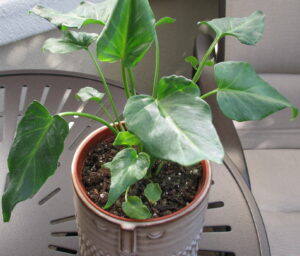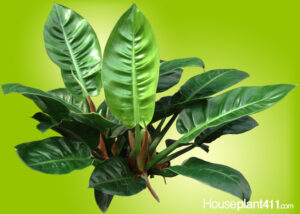Philodendron Emerald Prince – How to Grow Care Guide
Bought this recently from Trader Joes without any name or care instructions. Looks like it could be from the upright Philodendren family but we need your expertise. Thank you in advance for your help.
Hi Anne,
Your plant is a type of Philodendron, but, from your picture, it’s a little difficult to tell whether it’s an Imperial Green Philodendron, a Philodendron Emerald Green, or a Philodendron Emerald Prince. I think it’s probably an Emerald Prince like the picture below. The good news is that the care tips for all three varieties are the same.


Light: This plant can live in low light, but it grows much faster in medium light.
Water: I recommend allowing the top 50% of the soil to dry out before you water. Water less, allowing the soil to dry out a bit more, during the winter months. It’s easy to save an underwater plant, but an over watered plants develops root rot and quickly dies.
Plant Food: Feed monthly when the plant is actively growing with a balanced fertilizer diluted to ½ the recommended strength. If your philodendron is not producing new leaves, it doesn’t need any plant food; this is especially true in the fall and winter.
Temperature: Philodendron plants like warm temperatures. They grow well when the temperature is 70°-85°F ( 21.1°-29.4°C)
Soil: Use a rich, quick draining soil. If your potting soil appears heavy, you may have to add a little sand to loosen it up.
Pot Size: Philodendrons like to be slightly root-bound and a little snug in their pot. When the roots have just about filled the container, move your plant to a new container that is only a few inches larger than the existing one. Do not use a pot that is too large. When the pot is too large, the soil stays wet too long and the roots rot. Be sure there are drip holes in the bottom of the pot so excess water can escape. The best time to re-pot a philodendron is in the late winter or early spring before the plant starts to grow again after a winter rest.
Toxicity: All philodendrons contain calcium oxalate are very poisonous plants. Please keep hem away from small children and pets.
